Abstract
Lever pressing of children from three age groups (2½ to 4, 5 to 6½, and 7½ to 9 years) could produce reinforcers according to a fixed-interval 40-s schedule: (1) Some were instructed to respond at a high rate, others at a low rate, and (2) they were subsequently taught to provide their own spoken self-instructions consonant with the earlier, experimenter-supplied instructions. All subjects who received high-rate instructions responded at a steady, high rate, which was maintained following self-instructional training. The effects of low-rate instructions were directly related to the age of the children. The two older groups produced low-rate patterns, with the oldest children responding at very low rates; effects were least noticeable in the youngest age group. Following self-instructional training, all three groups showed adult-like low-rate behavior and the oldest children showed an improved ability to estimate the interval length. The results provide further evidence of the importance of language as a determinant of human behavior.
Keywords: verbal behavior, instructions, self-instructions, developmental differences, fixed interval, postreinforcement pause, response rate, lever press, children
Full text
PDF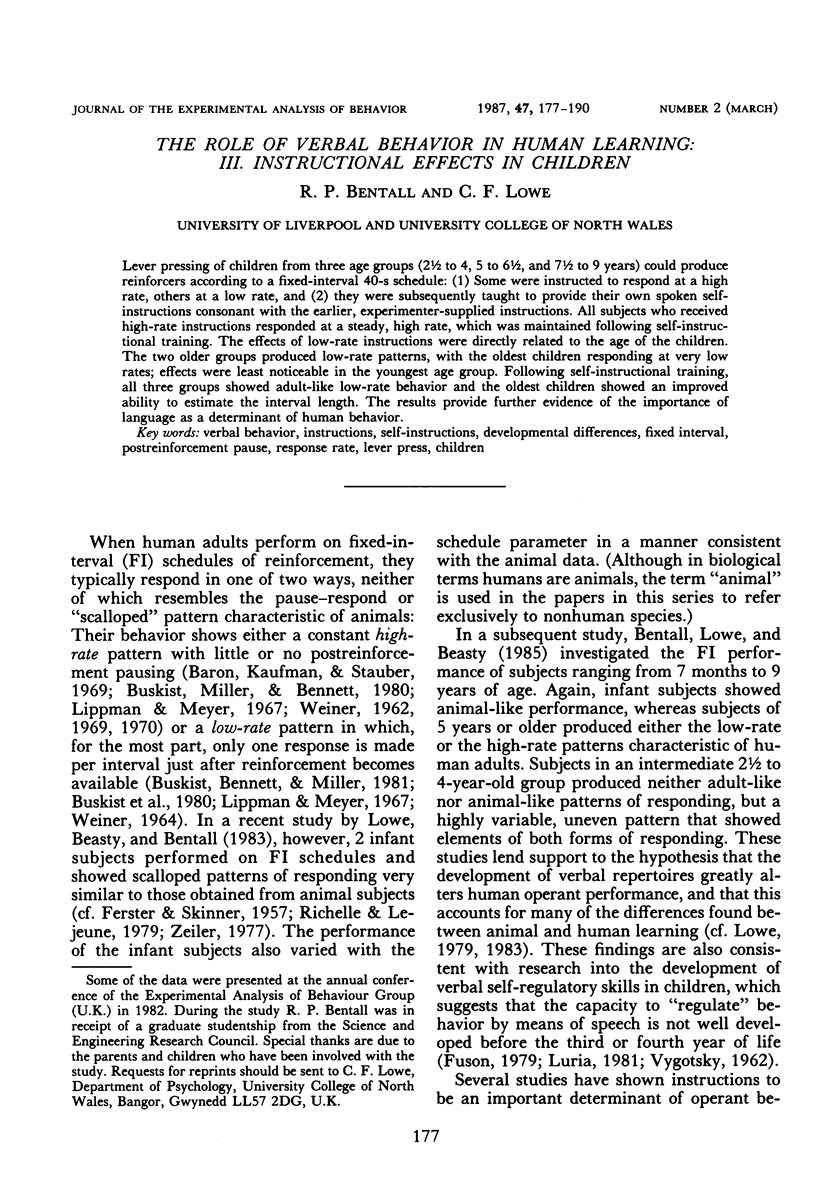
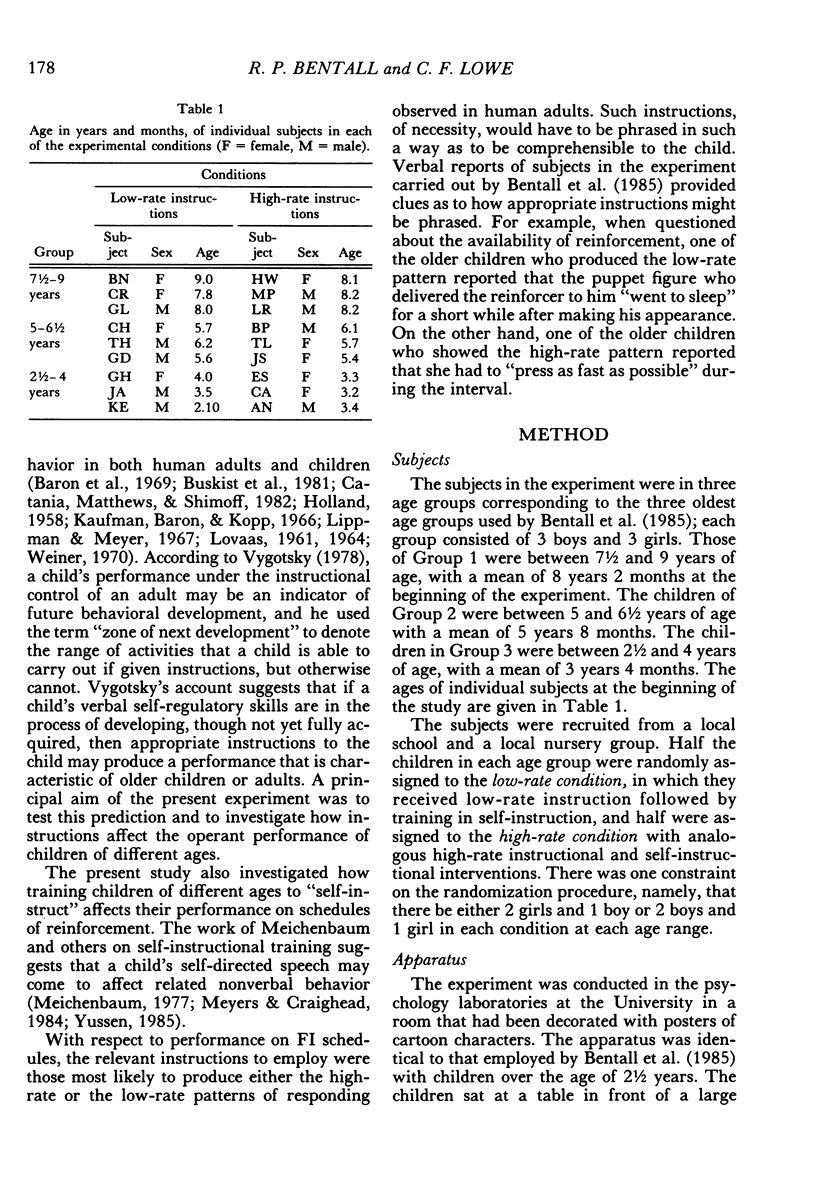
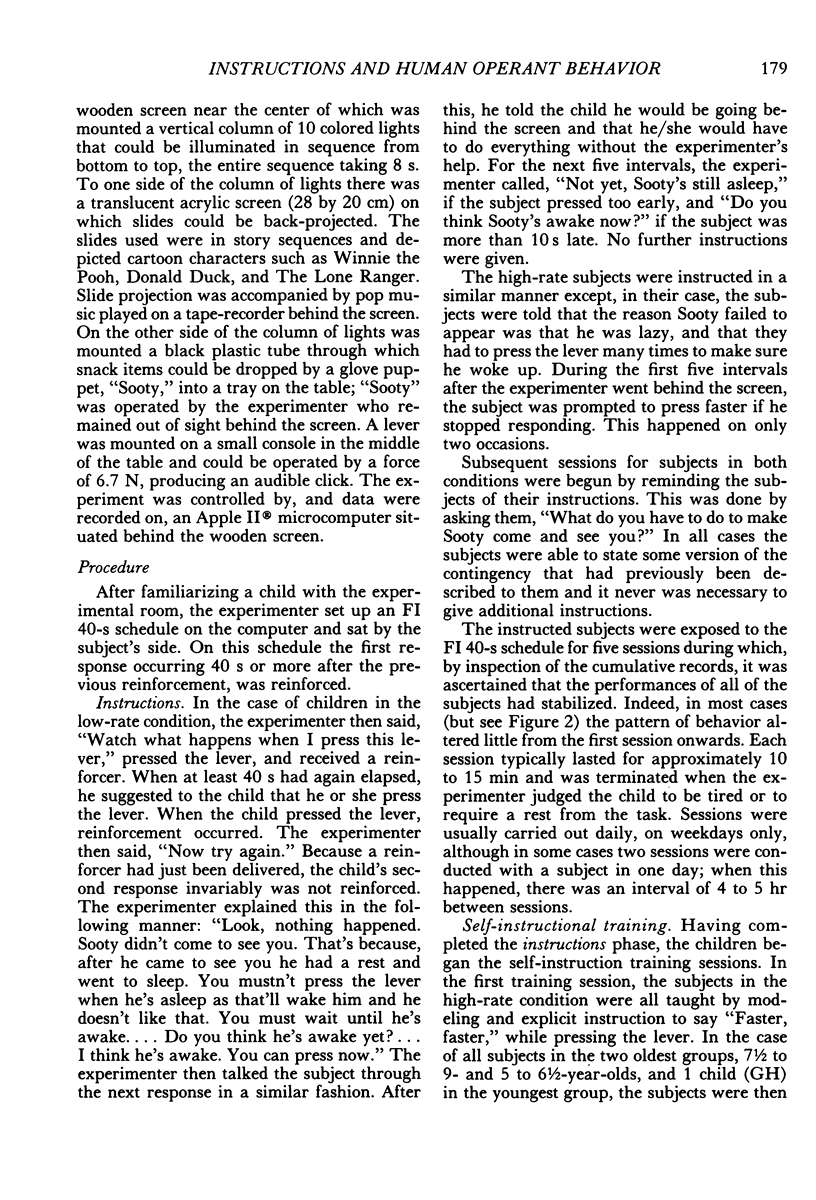
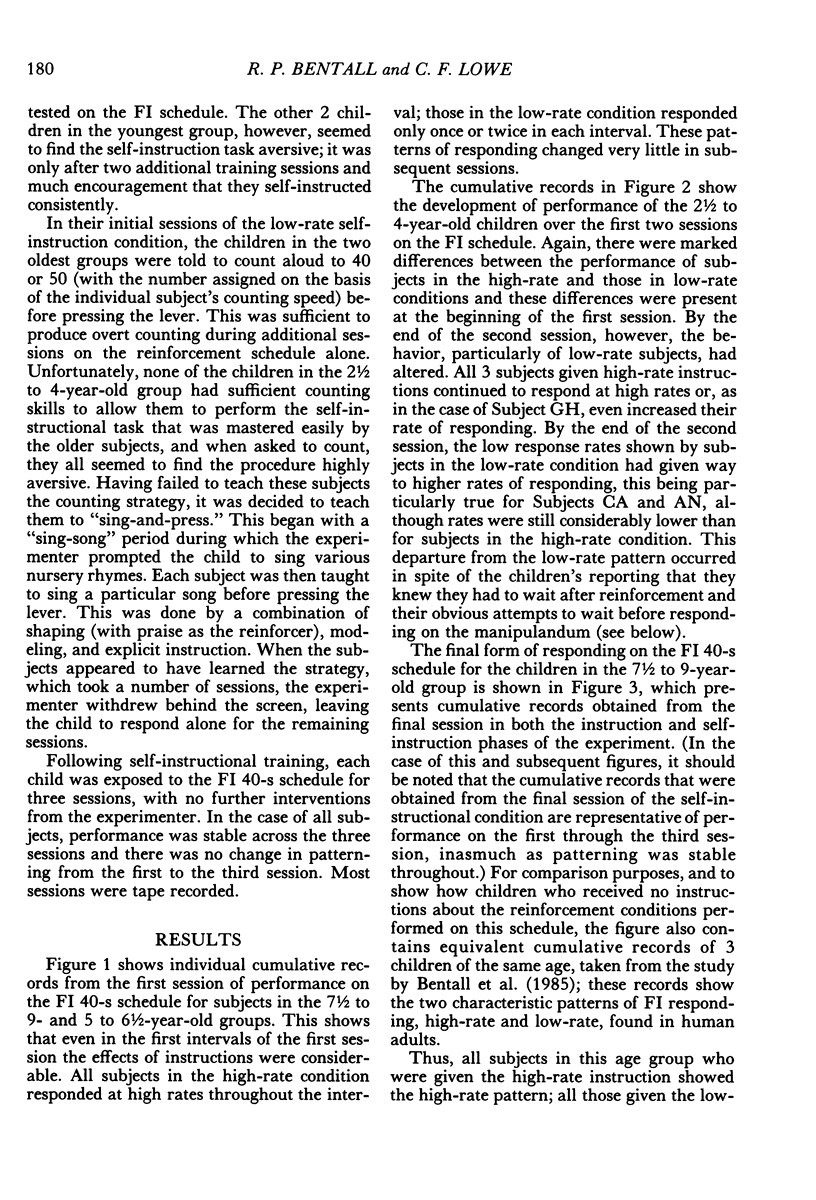
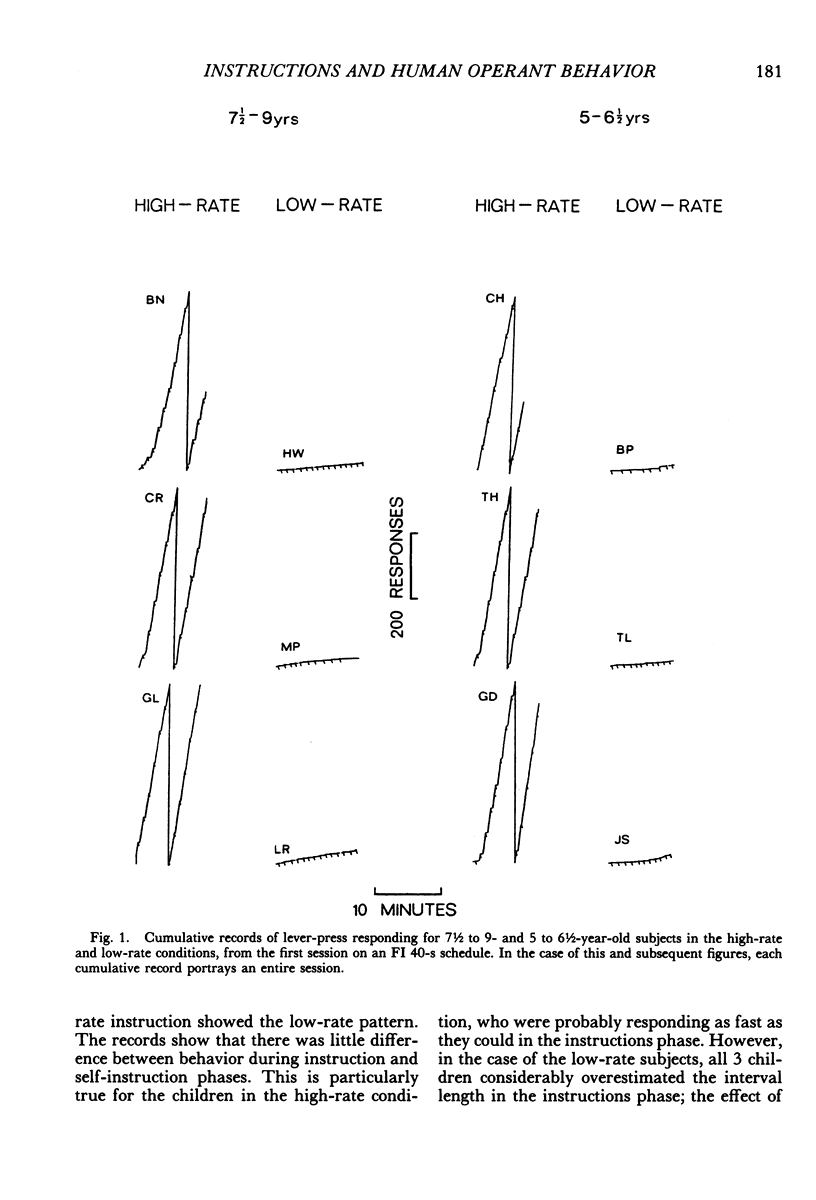
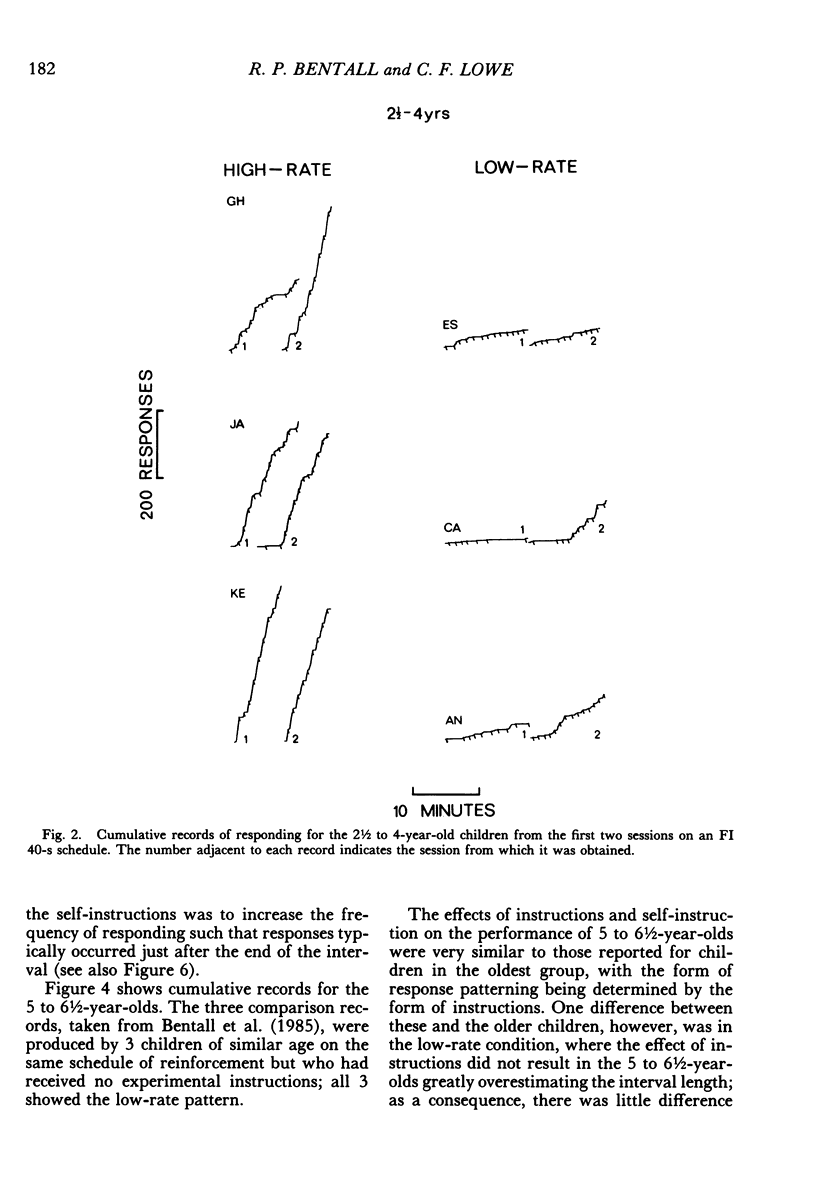
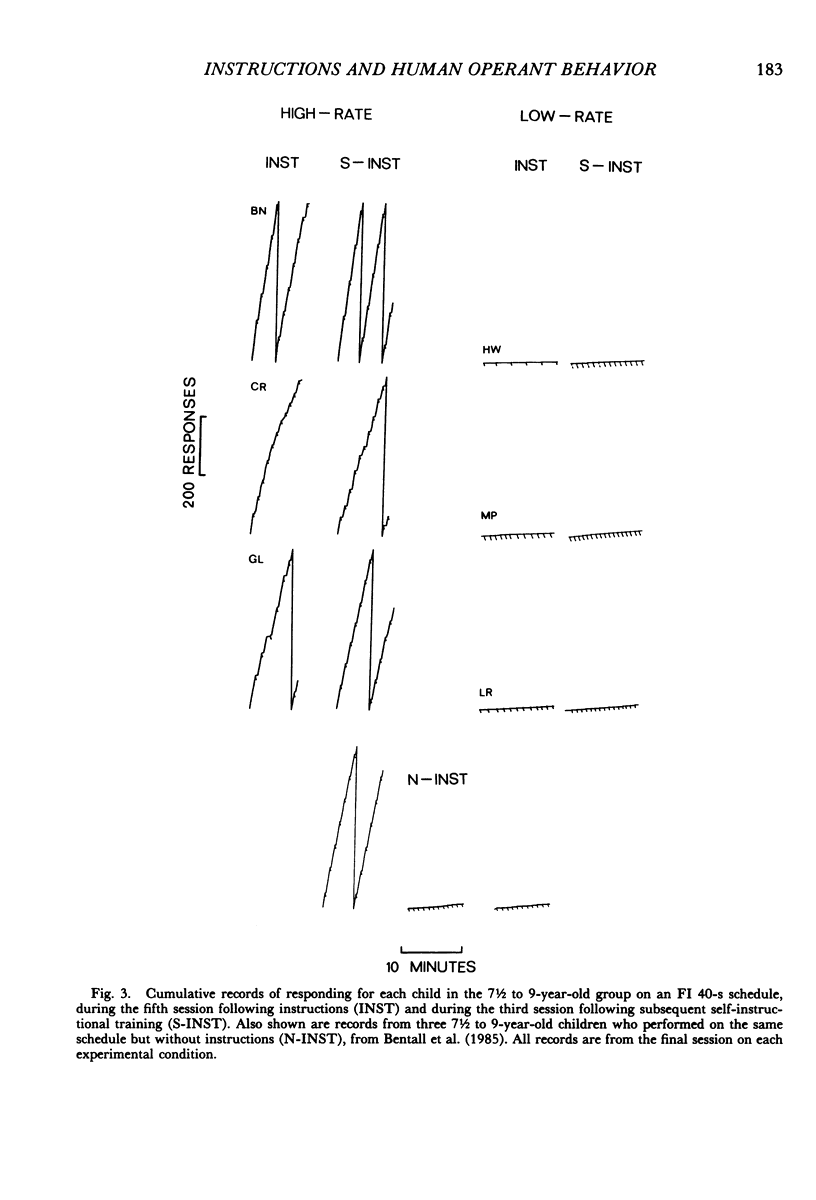
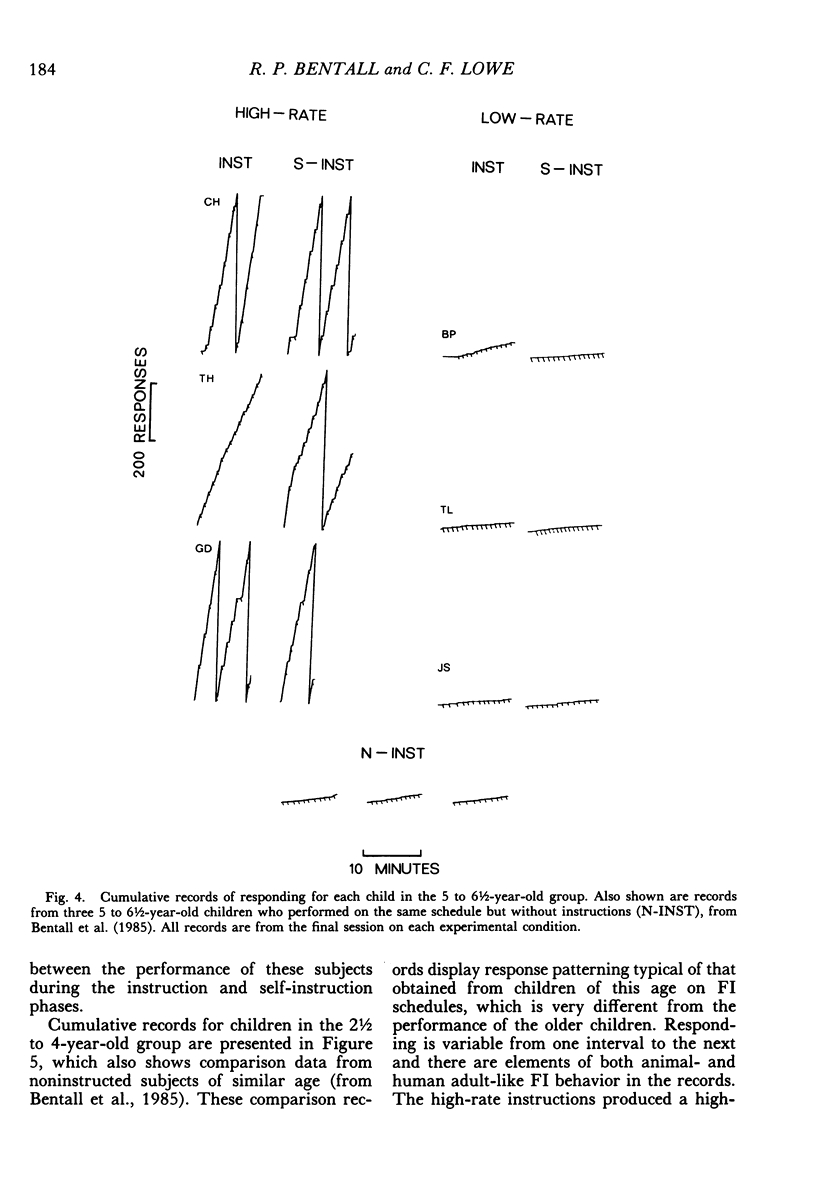
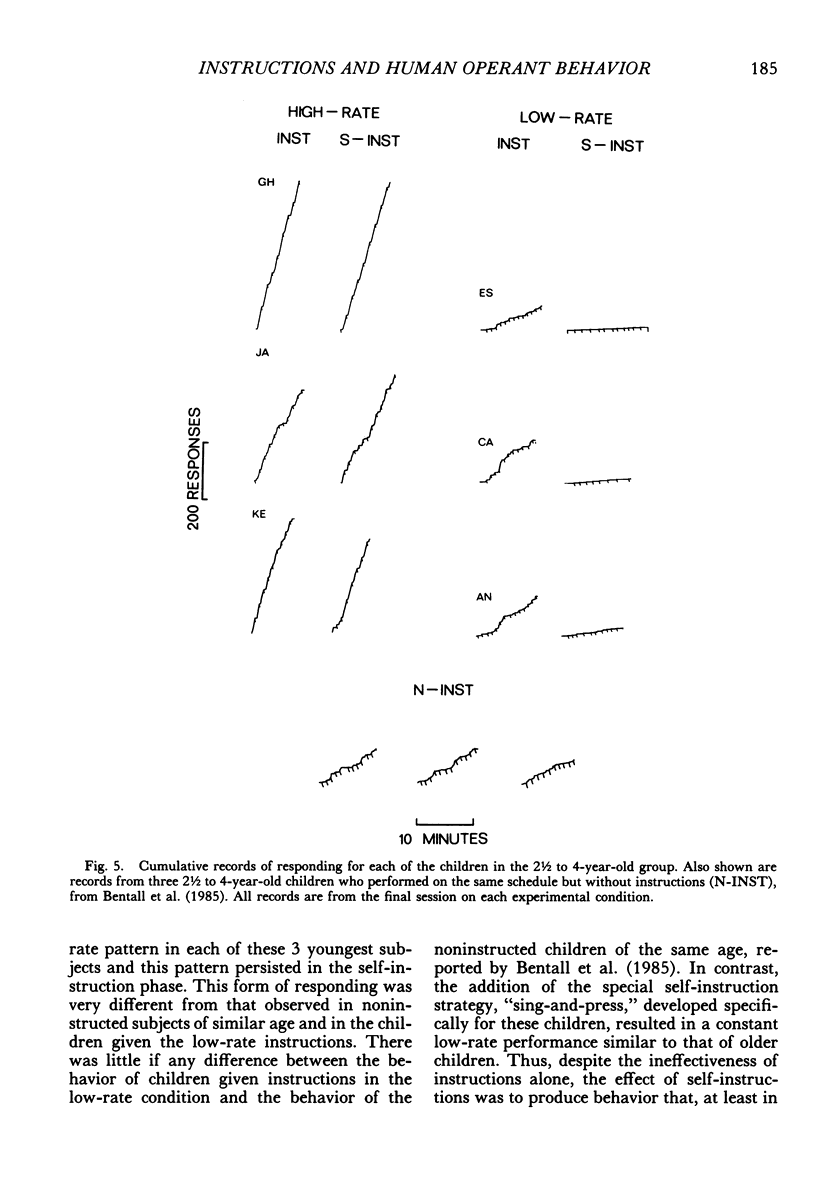
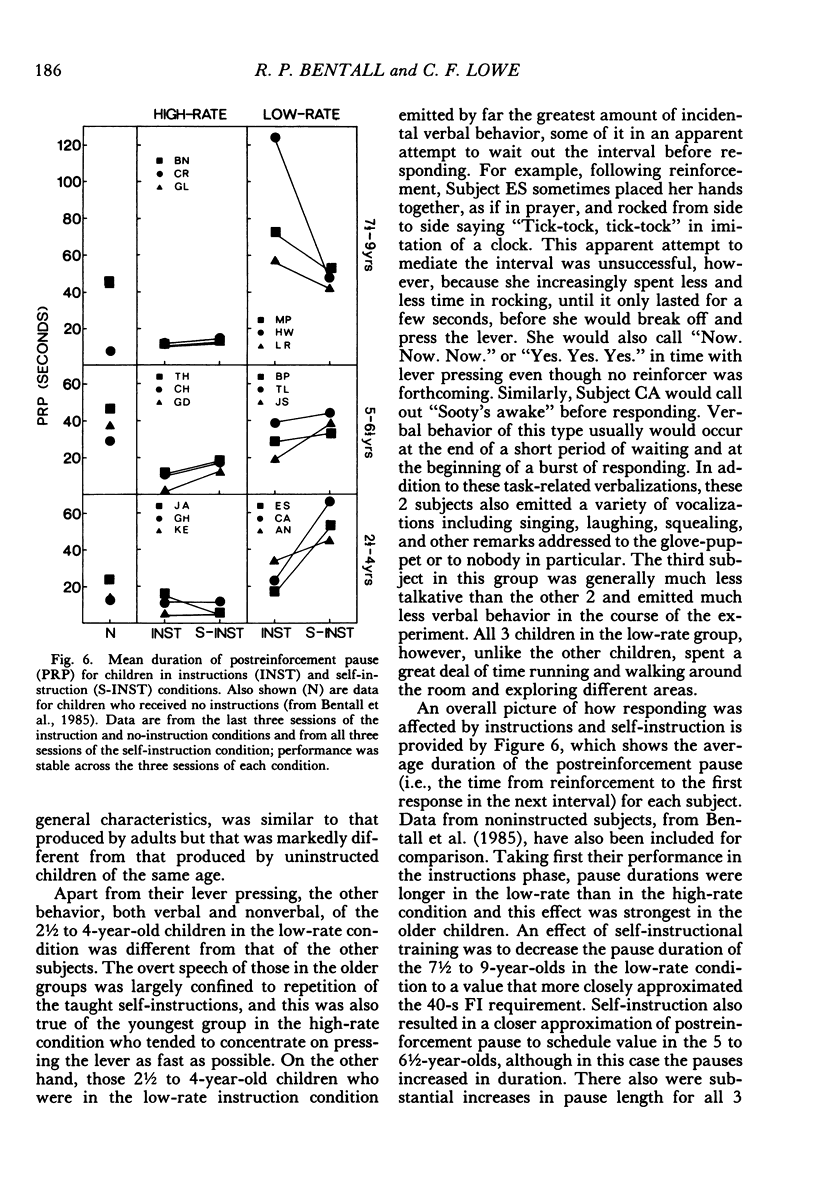
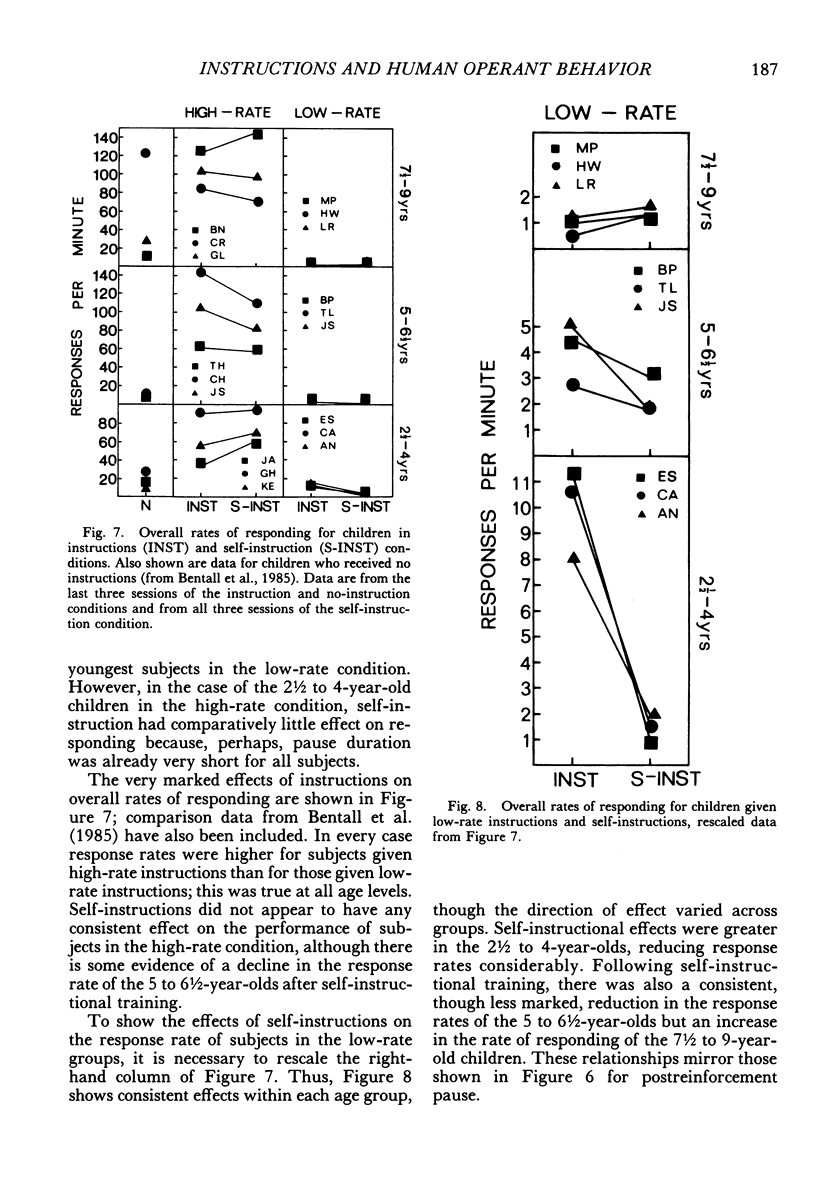
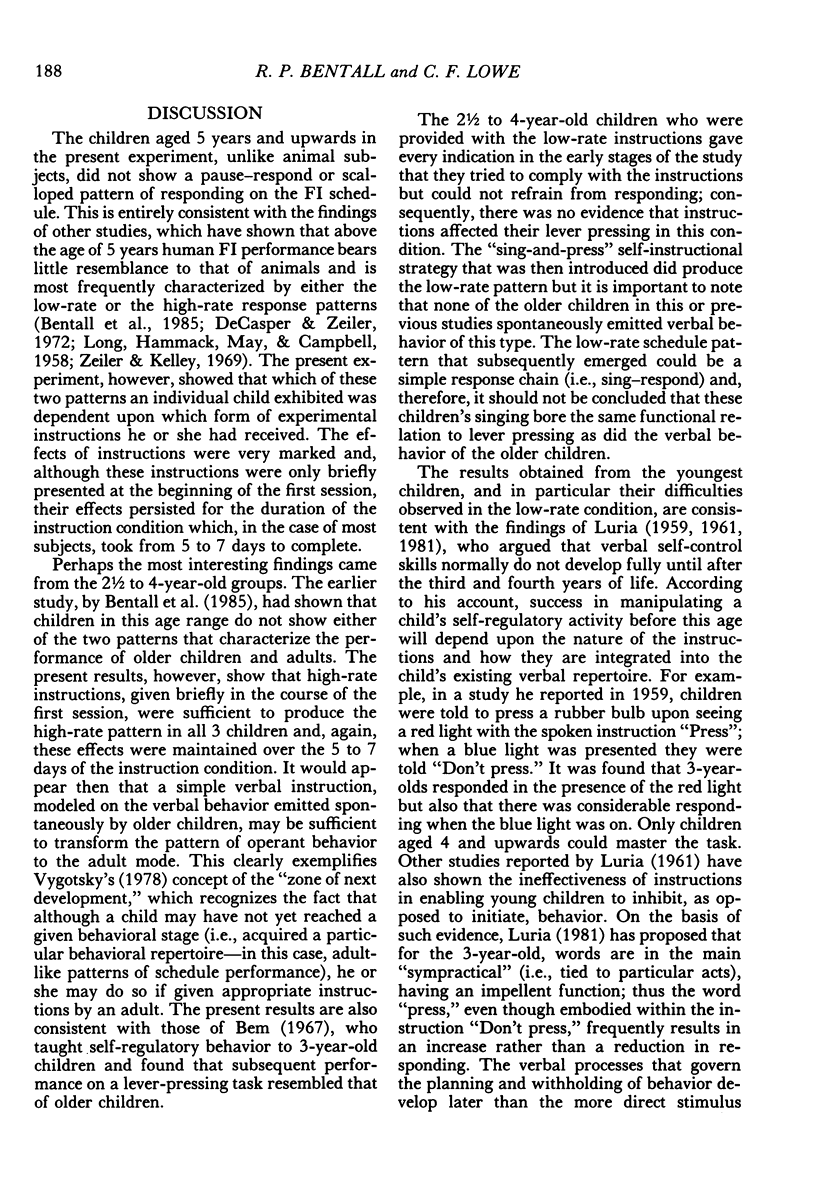
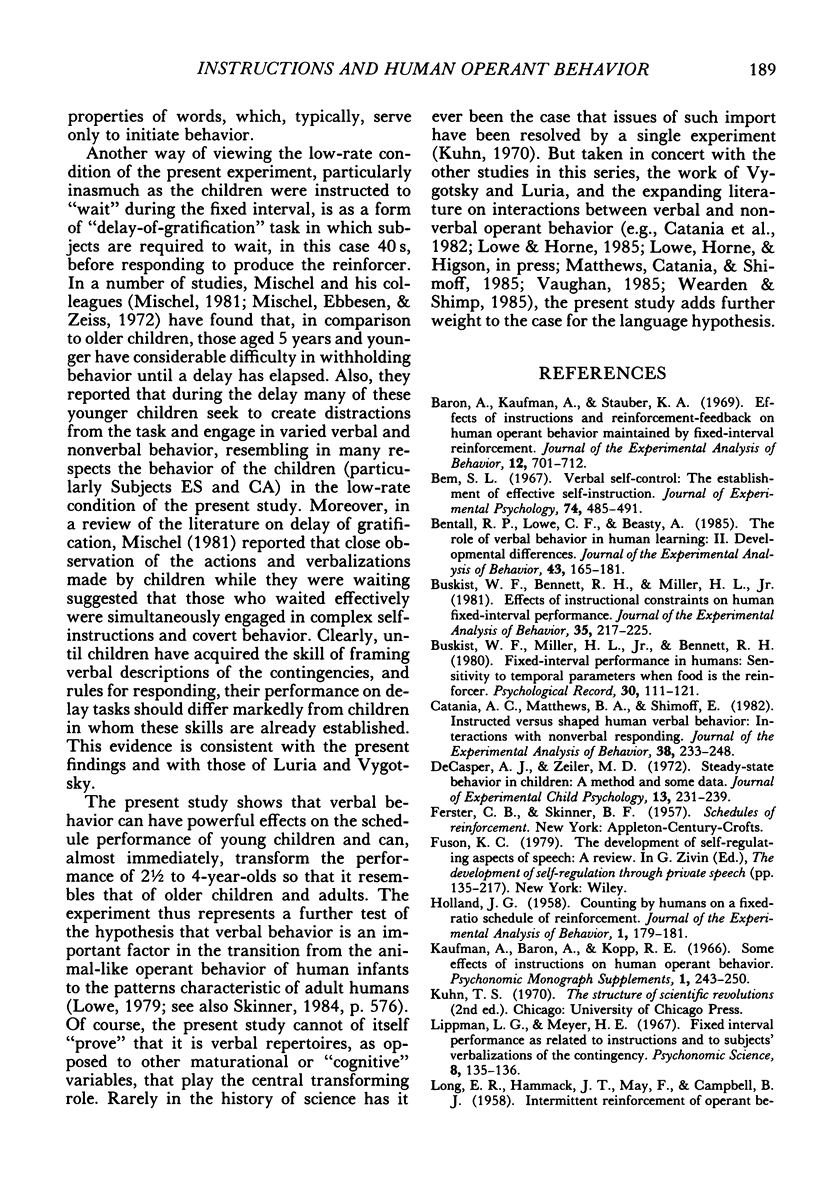
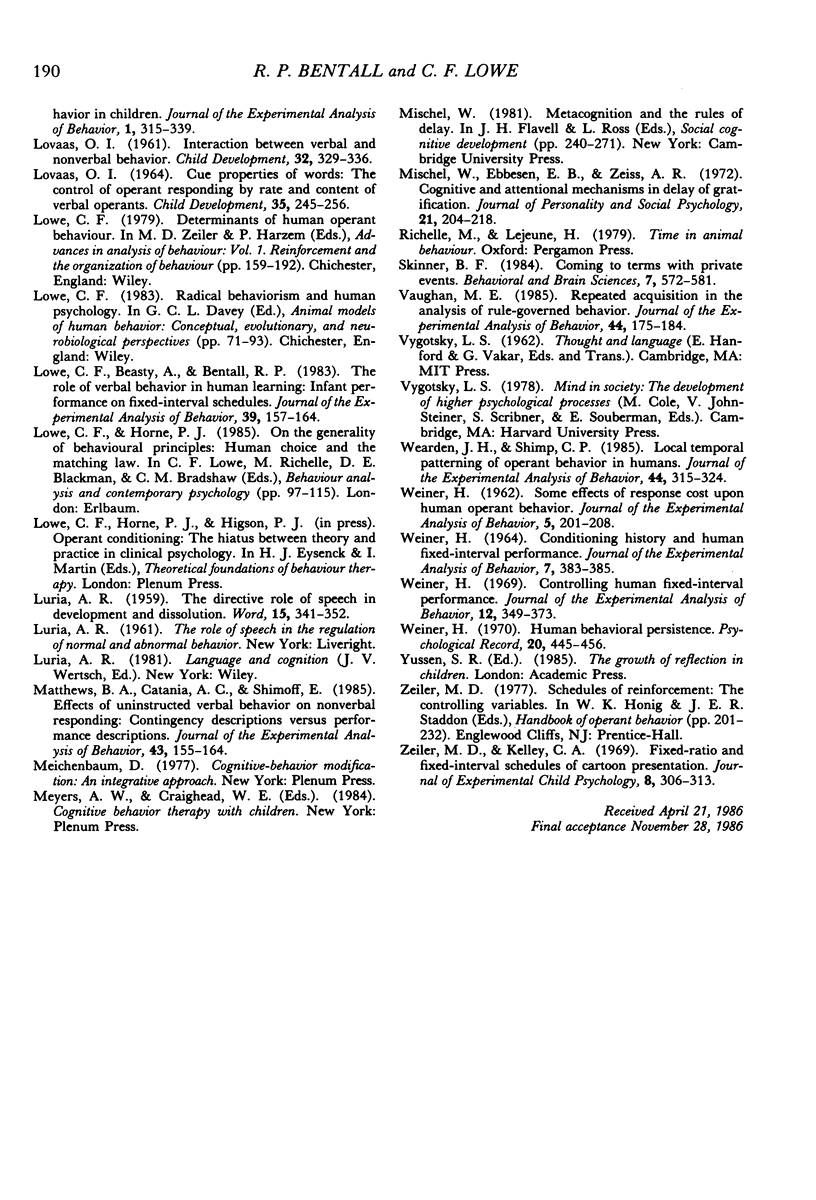
Selected References
These references are in PubMed. This may not be the complete list of references from this article.
- Baron A., Kaufman A., Stauber K. A. Effects of instructions and reinforcement-feedback on human operant behavior maintained by fixed-interval reinforcement. J Exp Anal Behav. 1969 Sep;12(5):701–712. doi: 10.1901/jeab.1969.12-701. [DOI] [PMC free article] [PubMed] [Google Scholar]
- Bem S. L. Verbal self-control: the establishment of effective self-instruction. J Exp Psychol. 1967 Aug;74(4):485–491. doi: 10.1037/h0024822. [DOI] [PubMed] [Google Scholar]
- Bentall R. P., Lowe C. F., Beasty A. The role of verbal behavior in human learning: II. Developmental differences. J Exp Anal Behav. 1985 Mar;43(2):165–181. doi: 10.1901/jeab.1985.43-165. [DOI] [PMC free article] [PubMed] [Google Scholar]
- Buskist W. F., Bennett R. H., Miller H. L. Effects of instructional constraints on human fixed-interval performance. J Exp Anal Behav. 1981 Mar;35(2):217–225. doi: 10.1901/jeab.1981.35-217. [DOI] [PMC free article] [PubMed] [Google Scholar]
- Catania A. C., Matthews B. A., Shimoff E. Instructed versus shaped human verbal behavior: Interactions with nonverbal responding. J Exp Anal Behav. 1982 Nov;38(3):233–248. doi: 10.1901/jeab.1982.38-233. [DOI] [PMC free article] [PubMed] [Google Scholar]
- Holland J. G. Counting by Humans on a Fixed-ratio Schedule of Reinforcement. J Exp Anal Behav. 1958 Apr;1(2):179–181. doi: 10.1901/jeab.1958.1-179. [DOI] [PMC free article] [PubMed] [Google Scholar]
- LOVAAS O. I. CUE PROPERTIES OF WORDS: THE CONTROL OF OPERANT RESPONDING BY RATE AND CONTENT OF VERBAL OPERANTS. Child Dev. 1964 Mar;35:245–256. doi: 10.1111/j.1467-8624.1964.tb05934.x. [DOI] [PubMed] [Google Scholar]
- LOVAAS O. I. Interaction between verbal and nonverbal behavior. Child Dev. 1961 Jun;32:329–336. doi: 10.1111/j.1467-8624.1961.tb05031.x. [DOI] [PubMed] [Google Scholar]
- Long E. R., Hammack J. T., May F., Campbell B. J. Intermittent reinforcement of operant behavior in children. J Exp Anal Behav. 1958 Oct;1(4):315–339. doi: 10.1901/jeab.1958.1-315. [DOI] [PMC free article] [PubMed] [Google Scholar]
- Lowe C. F., Beasty A., Bentall R. P. The role of verbal behavior in human learning: infant performance on fixed-interval schedules. J Exp Anal Behav. 1983 Jan;39(1):157–164. doi: 10.1901/jeab.1983.39-157. [DOI] [PMC free article] [PubMed] [Google Scholar]
- Matthews B. A., Catania A. C., Shimoff E. Effects of uninstructed verbal behavior on nonverbal responding: Contingency descriptions versus performance descriptions. J Exp Anal Behav. 1985 Mar;43(2):155–164. doi: 10.1901/jeab.1985.43-155. [DOI] [PMC free article] [PubMed] [Google Scholar]
- Mischel W., Ebbesen E. B., Zeiss A. R. Cognitive and attentional mechanisms in delay of gratification. J Pers Soc Psychol. 1972 Feb;21(2):204–218. doi: 10.1037/h0032198. [DOI] [PubMed] [Google Scholar]
- Vaughan M. E. Repeated acquisition in the analysis of rule-governed behavior. J Exp Anal Behav. 1985 Sep;44(2):175–184. doi: 10.1901/jeab.1985.44-175. [DOI] [PMC free article] [PubMed] [Google Scholar]
- WEINER H. CONDITIONING HISTORY AND HUMAN FIXED-INTERVAL PERFORMANCE. J Exp Anal Behav. 1964 Sep;7:383–385. doi: 10.1901/jeab.1964.7-383. [DOI] [PMC free article] [PubMed] [Google Scholar]
- WEINER H. Some effects of response cost upon human operant behavior. J Exp Anal Behav. 1962 Apr;5:201–208. doi: 10.1901/jeab.1962.5-201. [DOI] [PMC free article] [PubMed] [Google Scholar]
- Wearden J. H., Shimp C. P. Local temporal pattering of operant behavior in humans. J Exp Anal Behav. 1985 Nov;44(3):315–324. doi: 10.1901/jeab.1985.44-315. [DOI] [PMC free article] [PubMed] [Google Scholar]
- Weiner H. Controlling human fixed-interval performance. J Exp Anal Behav. 1969 May;12(3):349–373. doi: 10.1901/jeab.1969.12-349. [DOI] [PMC free article] [PubMed] [Google Scholar]


